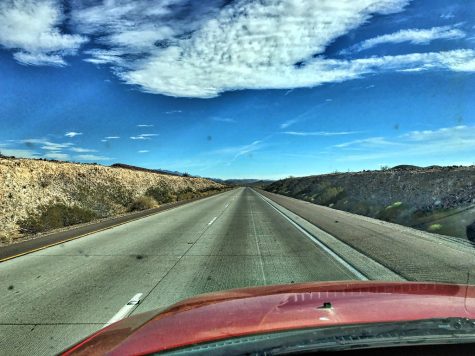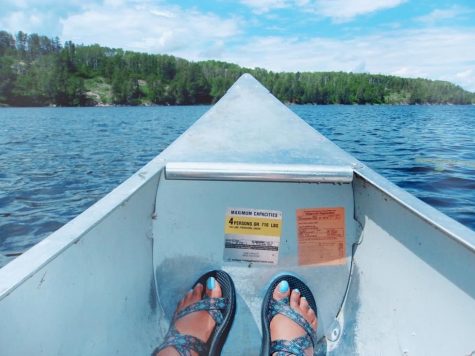The Curious Case of the One and Done
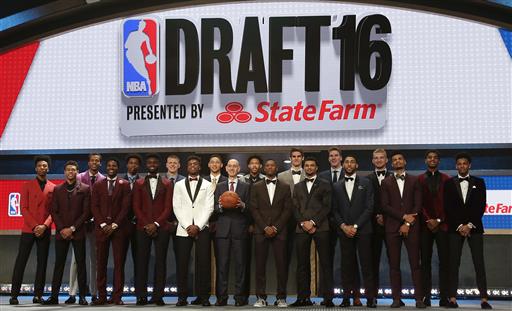
ASSOCIATED PRESS/Frank Franklin II
The NBA Draft has evolved in recent years to become a highly publicized event.
The average college dropout makes $37,388 per year, according to the Bureau of Labor Statistics. However, for a small group of students with only a high school diploma, the minimum amount they will earn in their first year on the job is just under $6 million dollars. Although this job isn’t at Google or Goldman Sachs, it is just as competitive and difficult to obtain. This type of lucrative, entry-level job is only found in an organization known around the world by only three letters: the NBA.
The NBA is the only league of the four major U.S. sports leagues that requires rookies to be at least nineteen years old. Major League Baseball allows high schoolers to be drafted, but college players must complete their sophomore season before being eligible. The NFL requires that all potential draftees be three years removed from high school. The NHL stipulates that players from North America must be between the ages of 18 and 20 to be drafted, while players from other parts of the world are eligible as long as they are 18.
When the so-called “One and Done” rule was instituted by the NBA in 2005, it instantly changed the landscape of both the college and the pro game. High school players began looking for a school that would boost their stock the most, rather than trying to find a new home for the four years of their college career.
Since the rule was put into place as part of a Collective Bargaining Agreement between the NBA and the Players’ Association, it has been a subject of controversy for the NCAA, as well as the NBA.

Members of the NBAPA are seen after a 2011 union meeting in New York.
For the college game, the one and done rule has both positive and negative implications. On one hand, it brings the best basketball players in the country to college for one year, which greatly boosts exposure and revenue for the NCAA and its member schools. On the other hand, it has turned the NCAA into more of a pre-professional league than it was ever intended to be.
College basketball as a whole has greatly benefitted from the one and done rule, as viewership of March Madness has skyrocketed in recent years: 23 million people tuned into the National Championship between Gonzaga and North Carolina, and March Madness generated 93.5 million total live stream views. This translates to about $900 million in revenue for the NCAA across the tournament, not counting the $10.8 billion sale of the TV rights to Turner Broadcasting, according to Investopedia.
Ratings and revenues have undoubtedly been boosted by the influx of talented players that arrive on campus every fall, and leave immediately after their season ends. Duke University coach Mike Krzyzewski said in an interview to ESPN that the opportunity for players to go one and done fuels the culture of them wanting “to leave as early as possible.”
Few players nowadays are able to resist turning pro when their draft stocks are at their highest point, no matter where they are in their college career. Former Duke point guard and Apple Valley High School’s own Tyus Jones is an example of this.
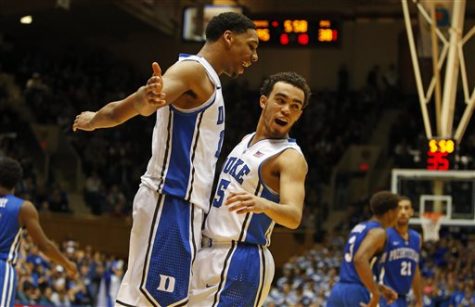
AVHS alum Tyus Jones with Duke teammate and current Philadelphia 76er Jahlil Okafor.
After leading Duke to a national title in 2015 and being named the Most Outstanding Player of the Final Four, Jones found himself in what was likely his best opportunity to get drafted as high as possible. So, he did what teammates Jahlil Okafor and Justise Winslow did and declared for the draft.
Jones’ story is not unique, and has since been repeated many times. Many of this year’s top players, including Lonzo Ball, Josh Jackson, and Markelle Fultz, all declared for the draft and hired an agent, terminating their amateur status (and NCAA eligibility).
There are just as many critics of the one and done rule in the college game as there are supporters, though. This list includes NCAA President Mark Emmert, who told the Baton Rouge Advocate that the current rule “makes a farce out of going to school.” Emmert also said that when players commit to a college, they commit to being a college student as well as a high-profile athlete. “First and foremost, it’s about being a student at the university,” he said.
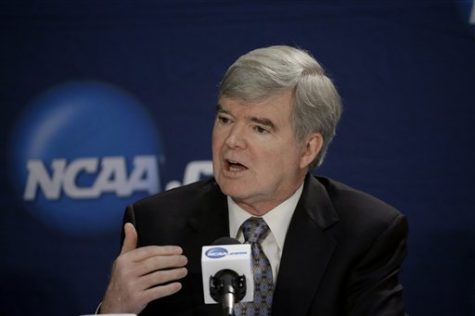
NCAA President Mark Emmert has been a public critic of the one and done rule.
Others argue that by forcing players to go to college for only a few semesters, the NBA is turning college basketball into a de facto minor league system, and changing top universities into 8 month sideshows for players who could be playing at the top level right away. Recently, some players have decided to skip going to college all together, and spend a year playing professionally in China or Europe. Denver Nuggets guard Emmanuel Mudiay played in the Chinese Basketball Association for a year after high school and said that it “gave me a better challenge than college would’ve given me.”
Other players go to college in order to play against the best competition possible, but make their intention to leave after their freshman year known. Duke commit and former Apple Valley guard Gary Trent Jr. has said that he would like to go pro at 19, and many of the other top players in his class have echoed that sentiment. Most top programs accept this as a way of life, and many coaches embrace the reality. The University of Kentucky has become notorious for recruiting players whose only goal for their college careers is to make them as short as possible. However, head coach John Calipari firmly believes that one and done players learn a lot from their time in college, and has publicly said that he hopes the rule stays in place.
Although the one and done provision has had a much smaller effect on the NBA, it still has its detractors. Some argue that fans would like to see the best players in the NBA, regardless of whether they are 18 or 19. Others say that the NBA should stop strong-arming the NCAA with rules on eligibility.
Despite the challenges of the one and done rule, it is likely here to stay. The CBA reached in 2016 kept the one and done rule in place, although the players’ union fought against it, hoping to model the NBA rule after the MLB. This year’s draft is full of freshman prospects, including the likely number one pick, Washington’s Markelle Fultz.
With the NBA Draft only a few weeks away, these are the top storylines to keep an eye on during draft day:
Where will Lonzo Ball go? Ball, a freshman guard from UCLA, has been in consideration for the top pick since the college season started. However, his father Lavar’s antics have made some wonder if he could be hurting Lonzo’s draft stock. From launching a shoe line to claiming he would’ve beat Michael Jordan in his prime to insisting that Lonzo will play for the Lakers, Lavar has made more headlines than his son, but it remains to be seen how it will affect Lonzo’s bottom line.

Lonzo and Lavar Ball have made waves throughout the season, both on and off the court.
Who will be the top three picks? Most analysts agree that Fultz will go number one, but there is speculation about who will go to the Lakers and Sixers at two and three. Kansas’ Josh Jackson, Kentucky’s De’Aaron Fox, and Duke’s Jayson Tatum are the most likely candidates, but don’t be surprised if Malik Monk from Kentucky or Dennis Smith of NC State slips into the top three.
What direction will the Timberwolves go? After picking first in 2015, Minnesota has improved enough to be picking out of the top 5, but still hold the 7th overall pick. The two most likely picks, according to ESPN’s Chad Ford, are Florida State forward Jonathan Isaac and Arizona seven-footer Lauri Markkanen, the latest tall European sharpshooter to enter the draft. If the Wolves decide to focus on defense, as is head coach Tom Thibodeau’s specialty, then the pick will likely be Isaac, but if grabbing a three point shooter is a priority, then expect Markkanen.
How many non-American players will be drafted? Ever since the Gasol brothers broke into the NBA, teams have looked to Europe for talent. That search has now expanded to encompass the entire globe, as there have been draftees from six out of seven continents. This year’s foreign stars include Markkanen, England’s OG Anunoby, Germany’s Isaiah Hartenstein, and France’s Frank Ntilikina. Of those four, Markkanen and Ntilikina figure to go the highest.




